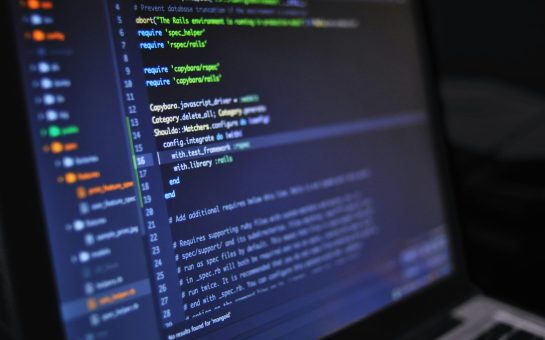Permanent exclusions in England were higher for Free School Meals (FSM), Special Educational Needs (SEN) and male pupils, government data shows.
A permanent exclusion is when a pupil is removed from a school and does not return, unless the decision is overturned.
The permanent exclusion rate refers to the number of permanent exclusions as a proportion of the overall school population, so a permanent exclusion rate of 0.15 means there were 15 permanent exclusions for every 10,000 pupils.
Free School Meals
Pupils eligible for FSM have consistently had a permanent exclusion rate four times higher than their peers since 2016/17, where the exclusion rate was 0.28 compared to 0.07 for pupils not eligible.
In 2020/21, both figures dipped, with an exclusion rate of 0.03 for pupils not eligible and 0.12 for pupils eligible.
The decline in exclusions across the board is largely attributed to the Covid-19 pandemic and school closures.
Andrew Old, a maths teacher who explores exclusion figures, commented how schools with high free school meal levels were often in challenging areas, with the data pointing to a wider correlation of disadvantage and exclusion.
He said: “I suspect that economics plays a part in what support parents can give and the ability of parents to avoid an exclusion with things like legal challenges or willingness to agree to a change of school.”
Whitney Crenna-Jennings, the Associate Director for Mental Health, Wellbeing and Inclusion at the Education Policy Institute think tank, based in London, agreed the correlation was part of a picture of inequality, with those from socially disadvantaged backgrounds more likely to struggle academically.
She said: “If a young person is excluded, it’s less likely that they’re going to have good attainment outcomes.
“For certain groups, the education system does a poor job at supporting learning and, when it comes to children who are obviously economically disadvantaged, we do see along other outcomes that they do worse than their more affluent peers so more likely to have lower attainment and education.”
Crenna-Jennings said a pupil’s personal circumstances could dramatically impact their likelihood of adjusting to the school system, affecting their academic performance.
She added: “We know that socioeconomic adversity has an impact on the brain as it develops in early childhood.
“I think we really do have a situation where a lot of need around mental health and around emotional health is not met in schools.
“If they’re not getting the right type of support, they may instead face disciplinary action and exclusion and I think that’s one of the driving factors when it comes to that inequality along socioeconomic lines that we see in exclusion rates.”
Special Educational Needs
AN OBVIOUS DISPARITY: Data highlighting the differences in pupil permanent exclusions by Special Educational Needs | GRAPH CREDIT: Graph made on Flourish by Noah Keate
For SEN pupils, there was a clear divide between pupils who had a formal statement or Education, Health and Care (EHC) plan and those who did not.
An EHC plan is a document identifying educational, health and social needs for pupils, setting out support to meet those challenges. By April 2018, they replaced statements for pupils in England.
SEN pupils without a statement had an exclusion rate of 0.35 in 2016/17, compared to 0.16 for pupils with a statement or EHC plan. By contrast, non-SEN pupils had an exclusion rate of 0.06.
In 2020/21, this dipped to 0.15 for SEN children without a statement or EHC plan, 0.08 for pupils with a statement or EHC plan and 0.03 for those with no SEN.
Old said the category of Social, Emotional and Mental Health (SEMH) overshadowed other types of SEN, accounting for the vast majority of exclusions compared to autism and speech and language difficulties.
He said: “If a child has bad behaviour, that is grounds for suspecting they should be dealt with as having SEMH issues so it becomes almost routine for the worst behaved to be put in that category.”
Regarding the disparity between pupils with and without an Education Health and Care Plan (EHCP), Old said it was more difficult to get an EHCP, with pupils who have one accessing more support after a thorough assessment.
He added: “It’s a lot easier to be on the SEND (Special Education Needs and Disabilities) register without EHCP so therefore even if there’s no indicator of SEND other than poor behaviour, they’re likely on the SEND register but not EHCP.”
Crenna-Jennings highlighted how schools can struggle to support parents and children with SEN.
She said: “There’s a large amount of anecdotal evidence from parents of children with special educational needs that it can be a real struggle to get the right support in place for a child with additional needs in school.
“The school that a child attends is a hugely important factor for whether their needs are even sort of recognised and the support is subsequently put in place.”
Crenna-Jennings claimed permanent exclusion disparities were a red flag that the education system was not being effective for children with additional needs.
Gender
Males were nearly four times more likely to be permanently excluded in 2016/17, with a permanent exclusion rate of 0.15 compared to 0.04 for females.
Between 2020/21, the permanent exclusion rate fell to 0.07 for males and 0.02 for females.
Old said the gender disparity was a given for as long as he remembered.
He said: “I think there’s an element in it of aggression.
“I’ve recently been reading up about something called reactance which is how people respond to restrictions in their freedom and again, there is a big gender difference on that.”
Social causes played a part, he believed, with men more likely to be violent than women.
Crenna-Jennings said part of the divide was differences in how males and females presented their mental and emotional health needs.
She said: “From the mental health literature, we know that a girl who is struggling with a mental health issue might be more inclined to present with internalising symptoms.
“So that might be withdrawing, becoming more quiet in a classroom setting.
“Whereas boys, we know from the literature, are perhaps more likely to display externalising symptoms.
“This could be disruptive, displaying so-called anti-social behaviours so something that would be picked up in a classroom setting as disruptive and potentially harmful to others in the classroom.”
Neither Old nor Crenna-Jennings were aware of any specific studies comparing differences in permanent exclusion levels between mixed sex schools and single sex schools, but both agreed this could be interesting to research.
Permanent exclusions as a policy
As a policy, Old defended permanent exclusions compared to schools operating a no-exclusion policy.
He said: “It’s necessary because if the very worst offenders are allowed to get away with it, they’ll then maybe end up just being suspended and those that would need to be suspended just get detentions.
“It is because there will be harm – possibly for them, but also for others – from staying where they are and harm from a school tolerating the behaviour.”
While not believing permanent exclusion solved all the problems, he felt it could be less harmful than the alternatives.
He added: “I would defend it as being less obviously harmful than letting children with extreme behaviour stay in a school with thousands of potential victims and continue to fail to get an education where they are.”
By contrast, Crenna-Jennings discussed Scotland’s different approach to exclusions.
She said: “I think a really interesting comparison, when we’re talking about different approaches of using exclusion or not, is Scotland, which historically has a very low permanent exclusion rate.
“And there’s no solid data to believe there are massive differences in the level of disruption in the classroom or behaviour challenges in Scotland vs England.
“So part of the picture is definitely a different approach to behaviour management and behaviour issues in the different countries.”
Permanent exclusions after the Covid-19 pandemic
All the data showed permanent exclusion rates fell in the academic years affected by Covid-19.
But now schools are largely back to their pre-pandemic structures, will exclusion levels return to their previous rates?
Old highlighted how the latest data for the autumn term of 2021/22 showed that, even though permanent exclusions were higher than the previous autumn term, they were not at pre-Covid levels.
He said: “It was predicted with the first lockdown that there would be a sudden burst of permanent exclusions when we came back and actually that first term back after the first lockdown, there was no sign of it at all.
“I suspect by the end of the year, it will be higher than lockdown years but probably lower than the trend.”
Crenna-Jennings, meanwhile, suggested permanent exclusions could increase because of the stress of the pandemic on young people.
She added: “The concern is that young people coming back to school after living through school closures and all the other disruptions might present with behavioural issues in the classroom that stem from these mental health and emotional issues and I think there is a worry that could lead to exclusion rates.”





